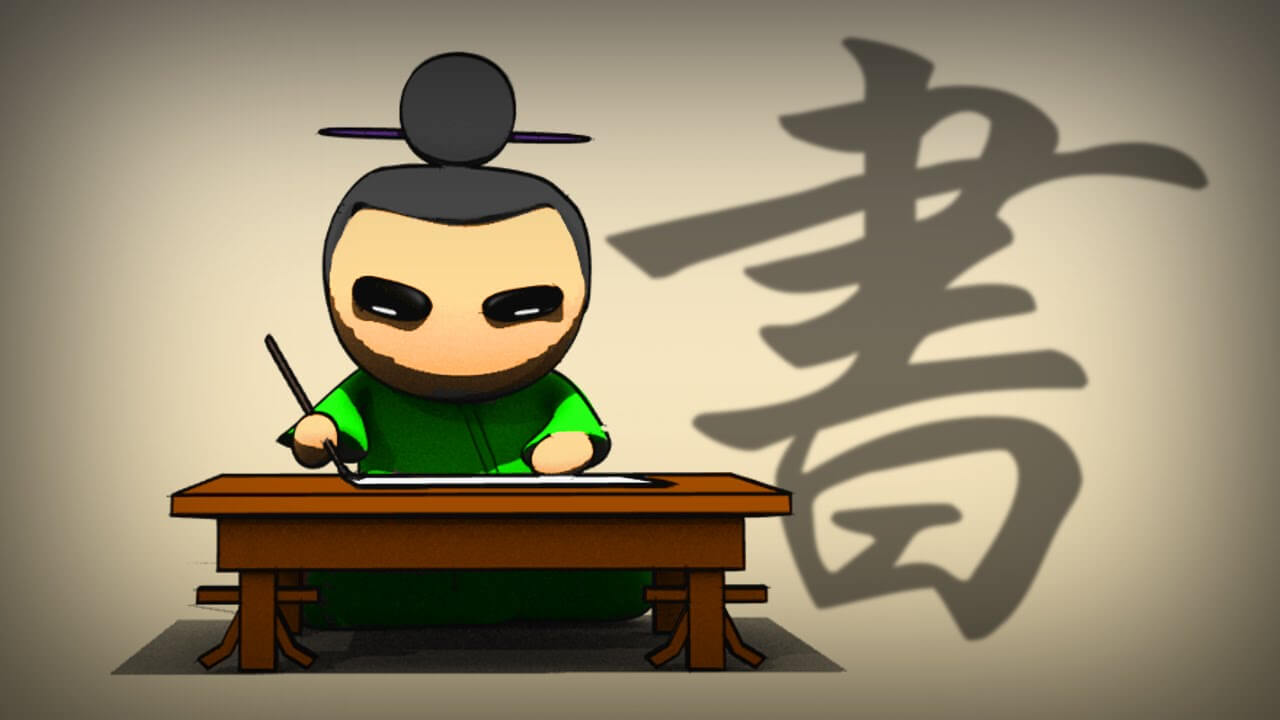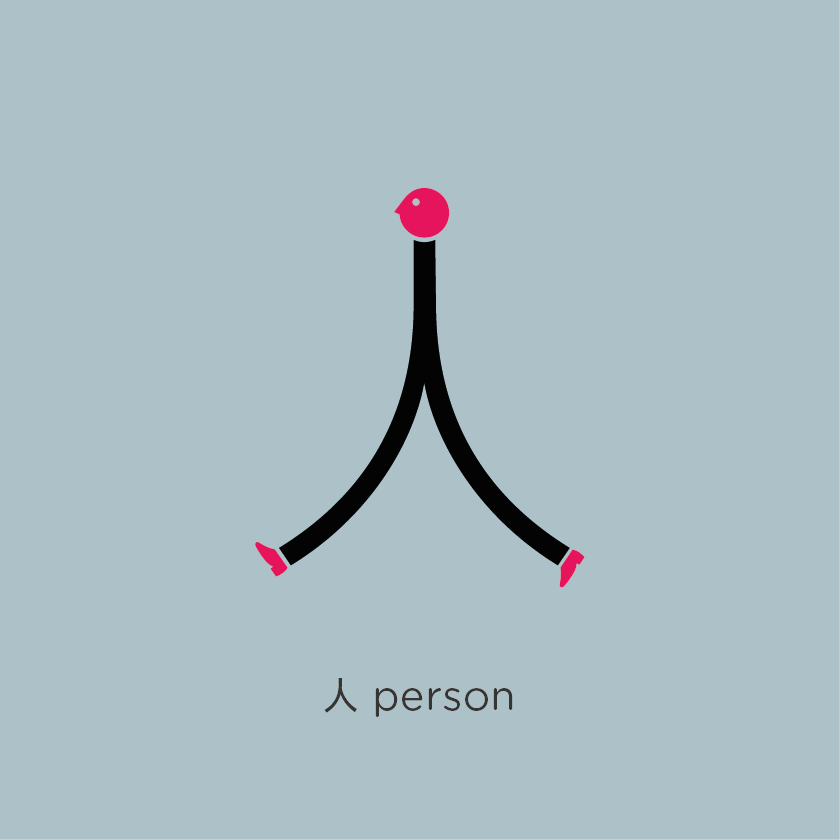How to Write Chinese Characters?
When learning any new language, the hardest skill to pick up always seems to be reading and writing. When it comes to Chinese that becomes even more exacerbated since it is character based and not what most of the world (with exceptions) is used to, the alphabet! How to write Chinese characters, is a question that often boggles the minds of Chinese learners. Like me you might find yourself wondering where to even begin when it comes to learning 50,000 of them!
Unlike some other languages, for example Latin based languages, where you can focus on speaking and listening and then with time reading and writing as it can come easily, you shouldn’t do that with Chinese. I’ll tell you why, although you might find yourself disagreeing with me, but think about it taking phonics into consideration. In alphabet-based languages, equipped with phonics just by looking at a word you can often guess what it sounds like, even with words that are new to you. You can’t do this in Chinese. When learning Chinese, because it’s a language based in tones, it’s extremely important to focus as much time on writing as you do on speaking as it will help to reinforce the other and improve your Chinese at a faster rate. Learn to Say Chinese by Watching Movies!
But don’t worry, we are here to help you learn Chinese writing! Here’s our easy Guide on ‘How to write Chinese Characters”.

The history of Chinese Characters
I’ll keep this brief, but focusing on the history and changes in Chinese Characters can go a long way to helping you to remember and recall them, you can find out more on our tips section below.
Chinese Characters are the world’s oldest form of written language, it’s also the world’s most widely used language today in terms of user number. The earliest confirmed evidence of Chinese characters is found as inscriptions carved on oracle bones from the Shang dynasty. Chinese characters are a logogram, that means each character can have a meaning tied to a word or even a phrase. A single character can have a big meaning, so be careful how you use it!
If we are to believe the legends, then Chinese characters were first invented by a bureaucrat who worked for the deity the Yellow Emperor. He was so enamored with his studies of the world and its beings that he created the first characters to describe them. This is called zi(4).

What’s the difference between traditional and simplified chinese characters?
Before you even start you need to decide if you will be learning Traditional or Simplified Characters. This is a big decision that would take us a whole other article to get into. Some might argue although extremely more difficult to learn, traditional characters make more sense in regards to meaning. This is because they still have many intricate older parts so you can often guess what the word could mean even if you don’t know what it sounds like. In the mainland all street signs, news, etc, are written using simplified characters. Because of its wide use we will be focusing on simplified traditional characters in this article.

How to write Chinese characters?
Think of Chinese characters like building a house! You have a foundation, these would be the radicals, and then individual bricks, these are characters, put the bricks together to create a house and you have Chinese words.
That’s the level it goes up in: radicals < characters < words.
For example:
Radical: 女 (nu3) mother.
Character: combined with 子 (zi3) son makes 好 (hao3) good.
Radical: 人 (ren2) people.
Character: combines with 尔 (er3) thou.
Can you guess by combining these two characters what word you can make?
That’s right 你好 (ni3hao3) hello!

Isn’t it beautiful? Every part of this word no matter how small you break it, even down to the radicals has a meaning. That’s the biggest difference between Chinese characters and our alphabet. In English, the alphabet is just blended together to create a word that has a meaning but in Chinese the individual radicals, which you can think of as ‘alphabet’ has its own meaning. This is extremely helpful when learning new characters, we will go into more detail on our tips section.
I hope that after looking at this word you may be feeling more confident in your Chinese writing. Well I have more good news!
I mentioned at the start that there are 50,000 words to learn, when you see how complicated characters can get this may worry you. Don’t! Technically you only need a few thousand (5,000-10,000) to get by. This may still seem like a big number until you think back to our foundation, the radicals. In Chinese writing there are only 214 radical components. Recognizing these gets you a long way, and now you already know two!
It’s not that difficult, that’s the basis of writing in Chinese, you just put ‘things’ together!

Useful Tricks to Write Chinese Characters
There is no ‘best’ way to learn how to write Chinese characters, you just have to work your way through different methods and find the one that is most suitable for you. Some students are able to memorize characters’ others require a more hands on approach! Below are some helpful tips to help you on your language journey.
Rote memorization: The easiest most popular method, but attempt at your own risk. Most students in China, local or foreign alike often try to cram characters into their brain by writing the characters over and over again. It’s not surprising most burn out and begin to hate Chinese characters. This method reminds me of punishment handed out to me by my teachers as a child, but it can be helpful for some, just remember language learning should be fun!
Visualization: There are two ways to use this method, although they may seem like they require a lot of time it pays off with how fast you learn the characters. The first involves closing your eyes, yes, I know that sounds strange! When learning a new character, you close your eyes and write the character using your mind. It may sound weird but try it, write a character out in your mind and speak out its name, you’ll be surprised how quickly you learn it. You can also couple this by writing the character in the air with your hand.
The second method requires even more imagination. Looking back at the history of characters you can see how Chinese characters have evolved, even now some still look like the thing they are describing. It can help to create stories for the characters you are writing or images as part of the characters. If you find this too time consuming there are many helpful books and flashcards that introduce the history and the meaning behind the characters, or have superimposed pictures to help second language users to remember them more easily.
Typing using pinyin: This won’t help so much with writing as it will with recalling the characters. By typing on your phone or computer with pinyin it can be used as an easy check to see if you can remember the characters. Just don’t overly rely on this method or you may forget how to write the characters out by hand without a computer prompting you with choices.
Software: With so much tech there are lots of options available to help you learn how to write Chinese characters. Software that writes a character out stroke by stroke is something I still use now when I’m not sure how to write a character. It’s great for beginners as they can visually see how it’s written. Many dictionaries for example Pleco, also offer this feature. By combining tech, for example the apple pen and stroke software you can practice writing.

How does this differ from writing on paper? When writing characters over and over again you may make a mistake but not realize it. As you continue writing you will keep emphasizing this mistake making it harder to correct at a later stage. However, by using a software to track character strokes it is able to tell you straight away whether or not you’ve made a mistake. You can do this with a pen or simply by using your finger. If you don’t feel like spending any money buying software just add a Chinese handwriting keyboard to your phone and you will be able to type characters by creating strokes with your finger.
We hope this quick guide has given you some basic information on how to write Chinese characters and made it seem less scary. If you’ve already started your language journey but seem stuck, then just go through our top tips section and try something new. Writing in Chinese doesn’t have to be a chore, just remember to break down word into characters or even to radicals to make it more manageable to learn.
Sign Up for the Fun of Learning Chinese
Copyright Notice: Everyone is welcome to forward the articles in this blog as long as the links to these articles are also included.

